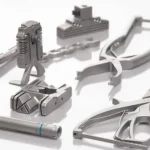Excessive sweating, or hyperhidrosis, can be an embarrassing and uncomfortable condition, but Botox for Sweaty Gland has emerged as a highly effective treatment. By temporarily blocking the nerves responsible for sweat production, Botox injections can significantly reduce excessive sweating in targeted areas like the underarms, palms, and feet. However, a common question remains: does it work for everyone? While Botox is a proven solution for many, individual responses can vary based on factors like sweat severity, body chemistry, and treatment precision. For those seeking expert care, Botox for Sweaty Gland in Dubai offers advanced solutions under professional supervision.
How Does Botox for Sweaty Gland Work?
Botox (Botulinum Toxin) works by inhibiting the release of acetylcholine, a chemical that stimulates sweat glands. When injected into overactive sweat areas, it temporarily paralyzes the nerves, preventing excessive sweating. The procedure is minimally invasive and typically takes 15-30 minutes, with results lasting 4-12 months.
Who is an Ideal Candidate for Botox Treatment?
Not everyone with excessive sweating will respond the same way to Botox. The best candidates include:
-
Primary Focal Hyperhidrosis Sufferers – Those with excessive sweating in specific areas without an underlying medical cause.
-
Individuals Unresponsive to Antiperspirants – People who haven’t found relief from clinical-strength deodorants.
-
Non-Surgical Preference Seekers – Those looking for a non-invasive alternative to surgical options like ETS (Endoscopic Thoracic Sympathectomy).
Areas Where Botox for Sweaty Gland is Most Effective
Botox is FDA-approved for underarm sweating but is also commonly used for:
-
Palms (Hands) – Reduces clamminess and improves grip.
-
Soles (Feet) – Minimizes foot odor and slipping.
-
Forehead & Scalp – Controls sweat-related discomfort during physical activity.
Does Botox Work for Everyone?
While Botox is highly effective for most, it may not be a universal solution. Factors affecting its success include:
Severity of Hyperhidrosis
Patients with mild sweating may see drastic improvements, while severe cases might need additional sessions.
Correct Injection Technique
A skilled doctor ensures precise placement for optimal results. Incorrect administration can lead to uneven sweat reduction.
Individual Biological Response
Some metabolize Botox faster, requiring more frequent treatments. Others may develop resistance over time.
Underlying Medical Conditions
Secondary hyperhidrosis (caused by diabetes, thyroid issues, or medications) may not respond as effectively.
Benefits of Choosing Botox for Excessive Sweating
-
Non-Surgical & Quick – No downtime, with noticeable results within days.
-
Long-Lasting Relief – Effects persist for several months before a touch-up is needed.
-
Improved Confidence – Reduces social anxiety linked to sweat stains and odor.
-
Minimal Discomfort – Topical anesthesia ensures a pain-free experience.
What to Expect During the Procedure
-
Iodine-Starch Test – Identifies the most active sweat zones for precise targeting.
-
Injection Process – Multiple small injections are administered in the affected area.
-
Post-Treatment Care – Avoid intense exercise and saunas for 24 hours.
Conclusion
Botox is a game-changer for hyperhidrosis, but its success depends on individual factors. Consulting a qualified specialist ensures personalized treatment for optimal sweat control. For those exploring advanced options, Botox for Sweaty Gland provides expert care with lasting results. While Botox for Sweaty Gland doesn’t work identically for everyone, it remains one of the most effective non-surgical treatments for excessive sweating. By understanding your condition and choosing an experienced practitioner, you can achieve significant relief and improved quality of life. If you’re considering this treatment, seek professional advice to determine if it’s the right solution for you.












